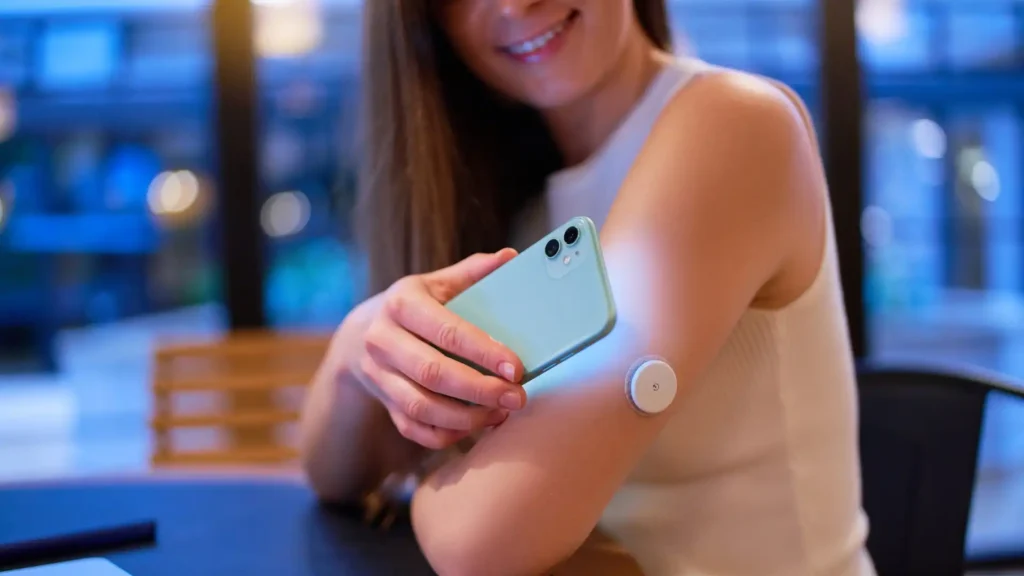Blood sugar monitors might seem like a tech gadget you can easily overlook, but for many people, they are a lifeline. These nifty devices can mean the difference between a good day and a not-so-good day for those managing diabetes or other blood sugar-related conditions. blood sugar monitor
But with so many options on the market, it can be a bit overwhelming to choose the right one. Fear not! This comprehensive guide will walk you through the ins and outs of blood sugar monitors, shedding light on their importance,
functionality, and tips for selecting the perfect one for your needs. So, grab a cup of tea, sit back, and let’s dive into the world of blood sugar monitoring.
Why Blood Sugar Monitors are Essential
Understanding Blood Sugar Levels
First things first, why is it so crucial to monitor blood sugar levels? Well, your blood sugar levels can affect how you feel on a day-to-day basis. When they’re too high or too low, you might experience a range of symptoms from fatigue to dizziness, and in severe cases, it can be life-threatening. Here are a few key points to consider:
- Energy Regulation: Glucose is the body’s primary source of energy. Proper blood sugar levels ensure that your body functions efficiently.
- Preventing Complications: Consistent monitoring can help prevent long-term complications such as neuropathy, retinopathy, and cardiovascular diseases.
- Medication Management: Helps in adjusting medication dosages, ensuring you’re neither under- nor over-medicating.
Types of Blood Sugar Monitors
Not all blood sugar monitors are created equal. There are several types, each with its pros and cons. Knowing the differences can help you make an informed decision.
- Traditional Glucometers: These require a small blood sample, usually from a fingertip. They are generally accurate and reliable.
- Continuous Glucose Monitors (CGMs): These devices attach to your body and provide real-time blood sugar readings. They are more expensive but offer constant monitoring without the need for frequent finger pricks.
- Non-invasive Monitors: These are relatively new on the market and use alternative methods like infrared light to measure blood sugar levels. They are less intrusive but can be less accurate.
Who Needs a Blood Sugar Monitor?
While it’s a no-brainer for diabetics, others might also benefit from keeping an eye on their blood sugar levels.
- Prediabetics: People at risk of developing diabetes can catch warning signs early and take preventive measures.
- Athletes: Monitoring glucose can help optimize performance and recovery.
- Health Enthusiasts: Even those without blood sugar issues might use monitors to understand how different foods and activities impact their glucose levels.
How to Choose the Right Blood Sugar Monitor
Key Features to Look For
When it comes to choosing a blood sugar monitor, there are a few features you definitely want to consider. Here’s a handy checklist:
- Accuracy: Look for monitors that are FDA-approved or have high user ratings for accuracy.
- Ease of Use: The device should be user-friendly. Consider factors like the size of the display, the ease of reading results, and how simple it is to operate.
- Portability: If you’re always on the go, a compact and portable monitor will be crucial.
- Data Management: Some monitors come with apps that track your readings and offer insights, which can be incredibly useful for long-term management.
- Cost: Not just the initial purchase, but also the ongoing cost of test strips and other supplies.
Comparing Popular Models
To make your decision a bit easier, let’s compare a few popular models on the market:
- Accu-Chek Guide: Known for its accuracy and ease of use. It also has a spill-resistant strip container.
- Freestyle Libre 2: A CGM that’s popular for its convenience and continuous monitoring capabilities.
- OneTouch Ultra 2: Affordable and reliable, a great choice for those on a budget.
User Reviews and Testimonials
Don’t just take our word for it. Checking user reviews and testimonials can provide valuable insights. Here are a few snippets from satisfied users:
- “The Freestyle Libre 2 has been a game-changer for me. No more constant finger pricking!”
- “Accu-Chek Guide is incredibly accurate. I trust it completely with my diabetes management.”
- “OneTouch Ultra 2 is easy on the wallet and does the job well. Highly recommend!”
Tips for Effective Blood Sugar Monitoring
Establishing a Routine
Consistency is key when it comes to blood sugar monitoring. Here are a few tips to help you establish an effective routine:
- Set Reminders: Use alarms or smartphone notifications to remind you to check your levels at the same times each day.
- Keep a Log: Whether it’s a traditional notebook or a digital app, tracking your readings can help identify patterns and triggers.
- Integrate with Daily Activities: Pair your monitoring times with daily habits like meals or bedtime to make it a seamless part of your routine.
Best Practices for Accurate Readings
To ensure you’re getting accurate readings, follow these best practices:
- Wash Your Hands: Always wash your hands before testing to remove any residue that might affect the results.
- Use Fresh Strips: Make sure your test strips are within their expiration date and have been stored properly.
- Follow Instructions: Each monitor might have slightly different instructions. Follow them to the letter to ensure accuracy.
When to Seek Medical Advice
Monitoring your blood sugar at home is a great way to manage your health, but it doesn’t replace professional medical advice. Be sure to consult your doctor if you notice:
- Consistently High or Low Readings: This could indicate that your current management plan needs adjustment.
- Symptoms of Complications: Such as numbness in extremities, blurred vision, or persistent fatigue.
- Significant Changes in Readings: If your readings suddenly spike or drop without a clear reason, seek medical advice.
Frequently Asked Questions (FAQs)
What is a normal blood sugar level?
A normal fasting blood sugar level is typically between 70 and 100 mg/dL. After meals, it should be less than 140 mg/dL.
How often should I check my blood sugar levels?
It depends on your individual health condition. Diabetics might need to check multiple times a day, while others might only need to check occasionally. Consult with your healthcare provider for personalized advice.
Can I use a blood sugar monitor if I’m not diabetic?
Absolutely! Blood sugar monitors can be beneficial for anyone looking to understand how their diet and lifestyle affect their glucose levels.
Are continuous glucose monitors (CGMs) better than traditional glucometers?
Both have their pros and cons. CGMs offer continuous, real-time monitoring but are more expensive. Traditional glucometers are more affordable but require finger pricks.
How do I know if my blood sugar monitor is accurate?
Most monitors are fairly accurate if used correctly. You can cross-check with lab results or consult with your healthcare provider if you have concerns.
Conclusion
Choosing the right blood sugar monitor can significantly impact your health and well-being. Whether you’re managing diabetes, prediabetes, or just curious about your glucose levels, having the right tools and knowledge is essential. Remember to consider the key features, compare popular models, and establish a routine for effective monitoring. With the right blood sugar monitor in hand, you’re well on your way to better health and peace of mind.
And there you have it! A deep dive into the world of blood sugar monitors. It’s more than just a device; it’s a step towards understanding and controlling your health better. So, why wait? Start your journey to optimal health today!
Discover more trends:
- Keep an Eye Out for Early Signs of Rheumatoid Arthritis: A Guide
- Nicole Kidman’s Revealing Dress Sparks a Heated Discussion
- Watch Out For The Early Signs Of Rheumatoid Arthritis
- Follow us on Facebook
- Follow us on Pinterest





